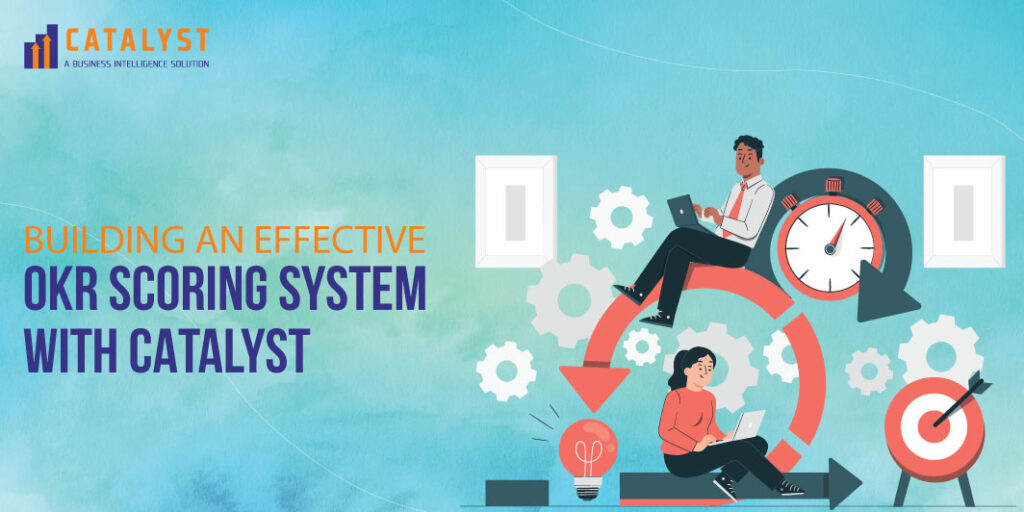
Underperformance in the workplace is an issue that must be addressed immediately, as widespread underperformance can quickly lead to a non-performance culture. Once established, this culture becomes incredibly difficult to reverse and has a spiraling effect on overall business performance.
There are two primary reasons for underperformance:
1.Will Issue
2.Skill Issue
While skill issues are relatively straightforward to address, will issues often require more time and effort. However, in both cases, the first step is identifying performance gaps—and this is impossible without being backed by data. As the saying goes, “what gets measured gets delivered.”
Tackling Skill Issues
Skill issues are more common and can be addressed systematically by taking the following steps:
- Set SMART Goals (KRA/KPI/Targets)
Goals should be specific, measurable, attainable, realistic, and time-bound. However, simply having a Performance Management Software (PMS) is not enough to solve this issue. You need specialists who can set SMART goals that are aligned with company and departmental objectives. If goals aren’t aligned or cascaded properly, employees may work toward objectives that are not relevant to the organization. - Quantify Goals and Automate Performance Scoring
Each KRA/KPI/target must be quantifiable with weightage, so the system can calculate scores automatically. It’s important to select a PMS software that avoids manager bias, as manual ratings often introduce subjective evaluations. Many PMS tools fail when they allow managers to rate performance manually, resulting in bias. Therefore, choose a software that doesn’t rely on managers’ ratings and also encourages employees to upload proof of achievements, building accountability. - Identify Training Needs Based on Performance Gaps
It’s essential to identify training needs based on actual performance data. This ensures that employees see the value in their training and can relate it directly to their performance gaps. Arbitrarily assigning training without data will likely leave employees unconvinced about its importance.
Addressing Will Issues
Will issues can be more challenging to resolve, but they can be addressed using the following approaches:
- Consistent Performance Reviews and Feedback
PMS is not just a tool to measure performance; it should be used to improve it as well. Regular performance reviews and 1:1 feedback sessions are crucial in addressing will issues, where employees may be disengaged or lack motivation. - Leverage Data to Spot Patterns
A robust PMS software can highlight patterns of performance and non-performance. These patterns should be used to give constructive feedback and identify trends in behavior. - Showcase Performance and Its Impact
Often, will issues can be tackled by showcasing both strong and weak performances. This can be done through rewards and recognition programs (R&R) within the software. Additionally, linking performance to compensation, such as bonuses and increments, can motivate underperforming employees by showing a direct correlation between effort and reward.
Why a Unique PMS Software Is Essential
To effectively address both skill and will issues, it is critical to select a unique PMS software that offers the following characteristics:
- Real-Time Dashboards: Monthly and Year-to-Date (YTD) performance scores should be displayed in attractive dashboards and reports, making it easy to track progress.
- Consulting-Backed Software: Choose a software that is supported by a consulting firm capable of aligning individual goals with business objectives, ensuring strategic alignment.
- Automated Scoring: The system should automate performance scores, eliminating the need for manager ratings and reducing bias.
- Link Performance to Compensation: Ensure the PMS links performance to rewards such as bonuses and increments, providing motivation for continuous improvement.
- Pattern Analysis: Look for a software that highlights performance/non-performance trends, broken down by individual KPIs, allowing for targeted interventions.
Conclusion
Underperformance can quickly become a company-wide issue if not addressed promptly. By leveraging data-driven insights, setting aligned SMART goals, and selecting the right PMS software, businesses can turn underperformance into an opportunity for growth. A tailored approach, combining technology with strategic human insight, is key to building a high-performance culture.


